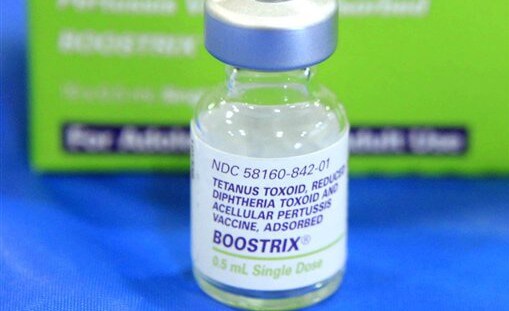
The U.S. appears headed for its worst year for whooping cough in more than five decades, with the number of cases rising at an epidemic rate that experts say may reflect a problem with the effectiveness of the vaccine.
Nearly 18,000 cases have been reported so far — more than twice the number seen at this point last year, the Centers for Disease Control and Prevention said Thursday. At this pace, the number for the entire year will be the highest since 1959, when 40,000 illnesses were reported.
Nine children have died, and health officials called on adults — especially pregnant women and those who spend time around children — to get a booster shot as soon as possible.
“My biggest concern is for the babies. They’re the ones who get hit the hardest,” said Mary Selecky, chief of the health department in Washington, one of the states with the biggest outbreaks. Washington and Wisconsin have reported more than 3,000 cases each, and high numbers have been seen in a number of other states, including New York, Minnesota and Arizona.
Whooping cough has generally been increasing for years, but this year’s spike is startling. Health investigators are trying to figure out what’s going on, and theories include better detection and reporting of cases, some sort of evolution in the bacteria that cause the illness, or shortcomings in the vaccine.
The vaccine that had been given to young children for decades was replaced in the late 1990s following concerns about rashes, fevers and other side effects. While the new version is considered safer, it is possible it isn’t as effective long term, said Dr. Anne Schuchat, who oversees the CDC’s immunization and respiratory disease programs.
Some parents in California and other states have rebelled against vaccinations and gotten their children exempted from rules that require them to get their shots to enroll in school. Washington state has one of the highest exemption rates in the nation. But the CDC said that does not appear to be a major factor in the outbreak, since most of the youngsters who got sick had been vaccinated.
Whooping cough, or pertussis, is a highly contagious disease that can strike people of any age but is most dangerous to children. Its name comes from the sound children make as they gasp for breath.
It used to be a common threat, with hundreds of thousands of cases annually. Cases gradually dropped after a vaccine was introduced in the 1940s, and the disease came to be thought of as a relic of another age. For about 25 years, fewer than 5,000 cases were reported annually in the U.S. The numbers started to climb again in the 1990s.
In both 2004 and 2005, cases surpassed 25,000. The numbers dipped for a few years but jumped to more than 27,000 in 2010, the year California saw an especially bad epidemic.
Experts believe whooping cough occurs in cycles and peaks every three to five years. But they have been startled to see peaks this high. Vaccinations are supposed to tamp down the amount of infection in the population and make the valleys in the cycles longer, said Pejman Rohani, a University of Michigan researcher who is co-leader of a federally funded study of whooping cough trends.
The government recommends that children get vaccinated in five doses, with the first shot at age 2 months and the final one between 4 and 6 years. A booster shot is recommended around 11 or 12.
Vaccination rates for young children are good — about 84 percent of 3-year-olds have gotten the recommended number of shots. But fewer than 70 percent of adolescents have gotten all their shots. Most states require pertussis vaccinations for school attendance.
In a possible indicator of a problem with the vaccine, investigators in Washington state were alarmed to see high rates of whooping cough in youngsters around 13 and 14.
Whooping cough typically starts with cold-like symptoms that can include a runny nose, congestion, fever and a mild cough. The CDC advises parents to see a doctor if they or their children develop a prolonged or severe cough. Whooping cough is treated with antibiotics, the earlier the better.
Health authorities are girding for what may be a bad couple of years.
“There is a lot of pertussis out there, and there may be more coming to a place near you,” Schuchat said.
___
Online:
CDC information on whooping cough: http://www.cdc.gov/features/pertussis/
CDC-recommended video of child with whooping cough: http://www.whoopingcough.net/video%20whooping%20cough.htm
Copyright 2012 The Associated Press.
































